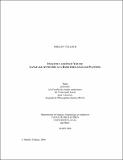Inuktitut and Inuit youth: Language attitudes as a basis for language planning

View Open
Metadata
Afficher la notice complèteAuthor
Tulloch, Shelley
Date
2014Citation
Tulloch, S. (2004). Inuktitut and Inuit youth: Language attitudes as a basis for language planning. Université Laval.
Abstract
The objective of this thesis is to identify language perceptions and attitudes among Inuit
youth (18-25 years old) in three Baffin Island communities: Iqaluit, Pangnirtung and
Pond Inlet. The premise of the study is that the Inuktitut language will only thrive if
young Inuit are committed to using and maintaining their ancestral language.
Semi-directed interviews (37) and closed questionnaires (130) elicit information on dayto-
day language choice, perceptions of language use, problems or concerns in daily
language use, symbolic and practical value of Inuktitut, English and French, and opinions
about the promotion of Inuktitut in Nunavut. These language perceptions and attitudes
expressed by young Inuit illuminate reasons for the current level of use of Inuktitut and
help prioritize areas for future language planning.
Findings suggest that although Inuktitut remains relatively strong, Inuit youth are aware
of and sensitive to the loss of Inuktitut, particularly in Iqaluit. Inuktitut is valued by Inuit
youth because it is the mother tongue; the language of Inuit tradition, culture and identity;
a “fun” language; a language that is being lost; a useful language for getting a job; and an
effective tool for participating and integrating in the community. At the same time,
English is valued because it is a “cool” language, the language of the new millennium
that allows Inuit youth to travel, get an education, get jobs, and participate in their local
communities and beyond.
Inuit youth are strongly motivated to maintain both Inuktitut and English. They need both
languages in order to pursue their aspirations of making the best of both worlds in which
they are currently negotiating their place.
